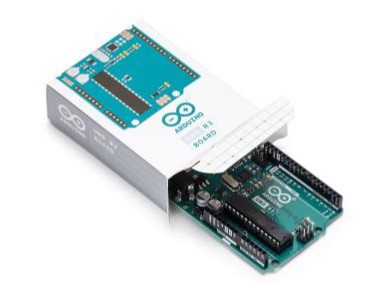
Arduino Uno is a microcontroller board based on the ATmega328P. It has 14 digital input/output pins (of which 6 can be used as PWM outputs), 6 analog inputs, a 16 MHz ceramic resonator (CSTCE16M0V53-R0), a USB connection, a power jack, an ICSP header and a reset button. It contains everything needed to support the microcontroller; simply connect it to a computer with a USB cable or power it with an AC-to-DC adapter or battery to get started. “Uno” refers to Arduino Software release (IDE) 1.0. The Uno board and version 1.0 of Arduino Software (IDE) were the reference versions of Arduino, now evolved to newer releases. The Uno board is the first in a series of USB Arduino boards and the reference model for the Arduino platform.
The lab comprises 6 Arduinos, whose specifications are listed below:
• Microcontroller: atmega328p
• Operating voltage: 5v
• Input voltage (recommended): 7-12v
• Input voltage (limit): 6-20v
• Digital i/o pins: 14 (of which 6 provide pwm output)
• Pwm digital i/o pins: 6
• Analog input pins: 6
• Dc current per i/o pin: 20 ma
• Dc current for 3.3v pin: 50 ma
• Flash memory: 32 kb (atmega328p) of which 0.5 kb used by bootloader
• Sram: 2 kb (atmega328p)
• Eeprom :1 kb (atmega328p)
• Clock speed: 16 mhz
• Led_builtin: 13
• Length: 68.6 mm
• Width: 53.4 mm
• Weight: 25 g